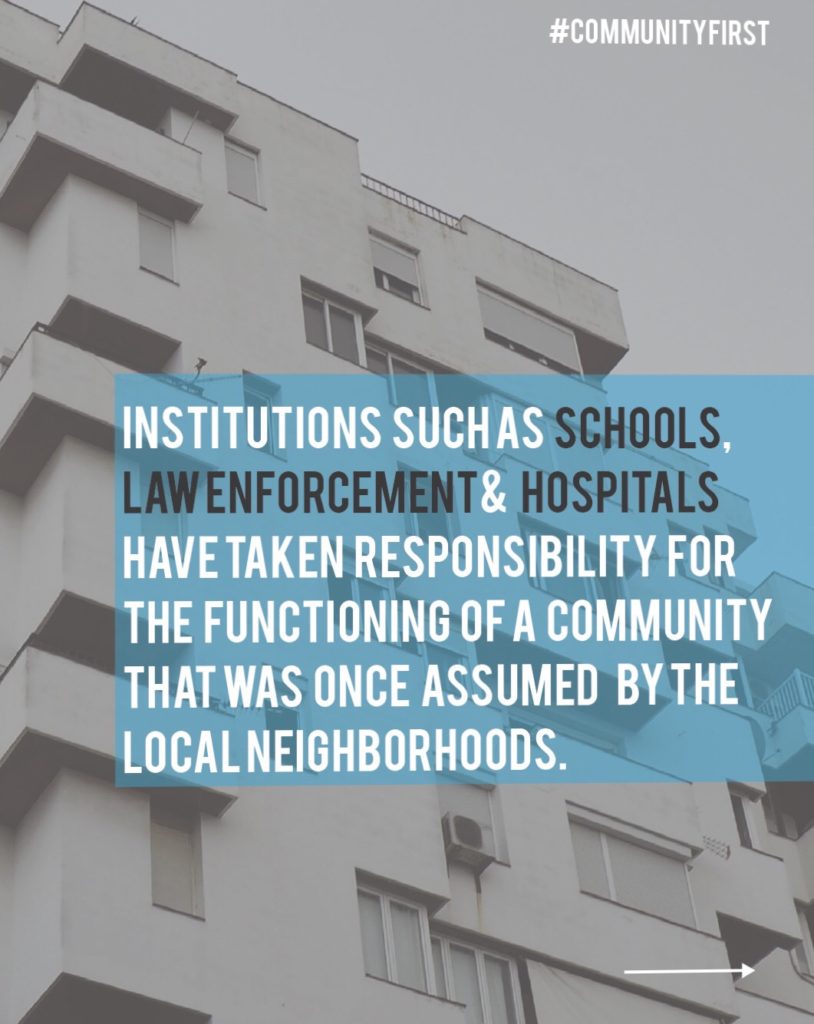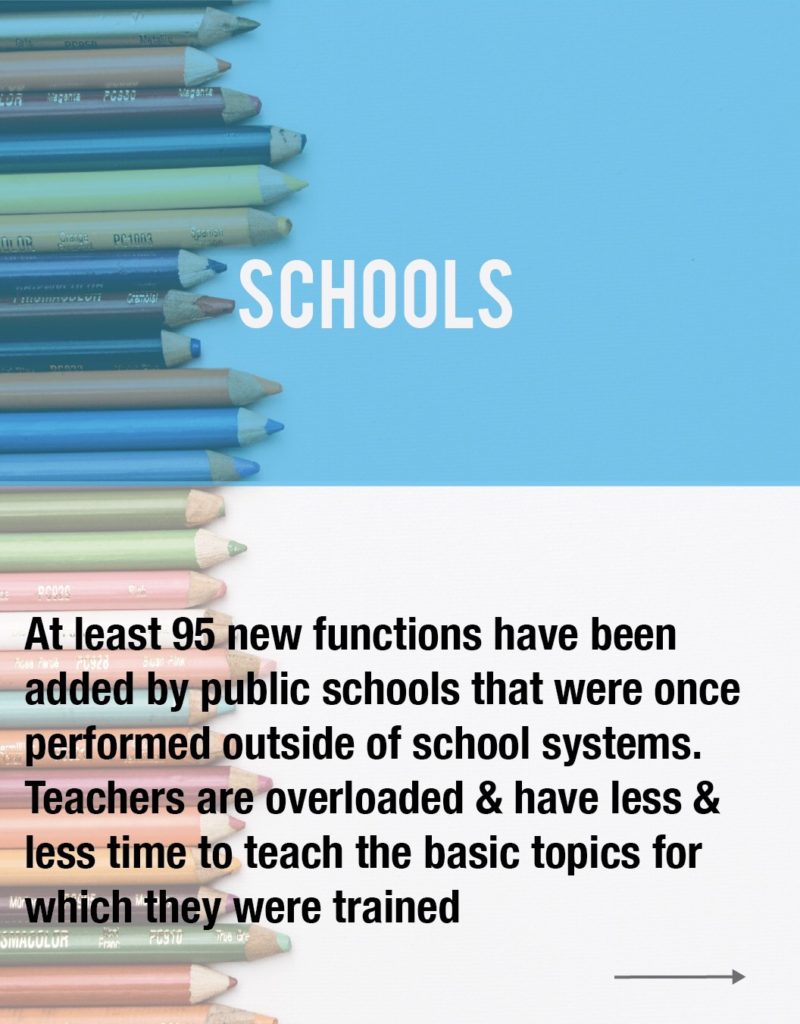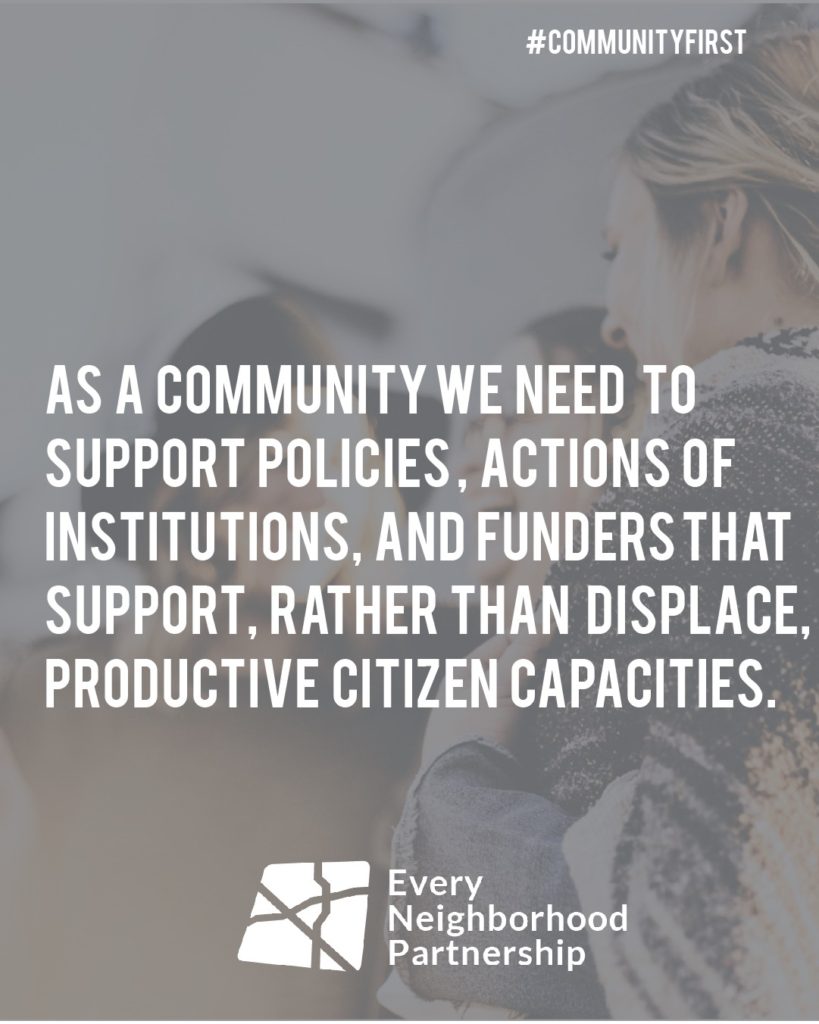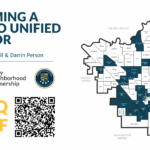This article was written by former ENP intern Alexis Kalugin.
Over the last few decades, institutional community development has taken over the structure of most community functions. Instead of finding ways to engage neighbors to be a voice of change in their community, most cities have put the burden of change on institutions. The problem with this narrative is that workers in schools, law enforcement, and healthcare are responsible for more community problems than they can handle. There is no relationship between the institution and the community to understand each problem. This approach becomes one size fits all and leaves a gap between the institution and the citizens.

The best way to understand this approach is through considering how institutional community development has affected the education system. In the 1900s-1910s, public schools were primarily supposed to facilitate nutrition, immunization, and health. As each decade went by, more and more responsibilities were added to this list. However, in the 1980’s, a true industrial revolution for the education system expanded and 18 new requirements were added to the already 35 requirements. With each decade, more and more requirements have been added, totaling 95 curriculum requirements since the 1900s.

Not all curriculum additions are negative, however, it has overwhelmed our teachers to the point that there is no room to teach basic skills. This method is institutionalized community development, because it has put the burden of proof entirely on the school system instead of on the community. The challenge is, how can we still address key issues that teachers are responsible for outside of the classroom? What other stakeholders exist in the community that have resources to step into the gap? Each citizen has the resources and power to take over community functions.
Health leaders across the country said “good health is affected by the local community. Individual behavior, associational life, the physical environment, and economic status are the major health determinants.” As a local community, our actions to one another truly have an effect on how we function. If the functioning of the community rests in the hands of each citizen, then it is crucial we invest in refunctioning the community so that empowerment starts in the neighborhood.

If we continue down this spiral of institutional development, communities will continue to “dysfunction and become isolated.” As a local community we need to rethink what community functions we should reclaim as citizens. The policies, actions of stakeholders, and funding in our community plays a huge part into re-functioning a community.

For more information on re-functioning community development, check out this article: “Refunctioning a New Community Development Strategy for the Future” at abundantcommunity.com.







Leave a Reply